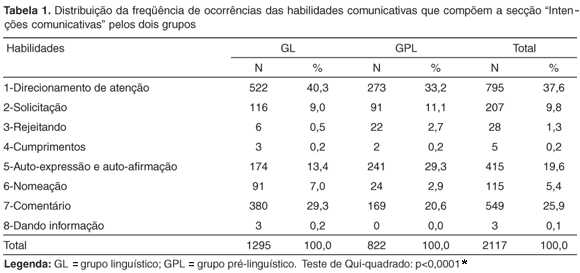PURPOSE: The aim of this study was to ascertain and to assess the interference of deaf children's linguistic level in their communicative abilities. METHODS:Thirty deaf children participated in this study, 15 in the pre-linguistic phase and 15 in the linguistic phase, independent of the communicative modality used - either oral or sign language. Their age ranged from 41 to 59 months. Thirty videotape recordings of the deaf children's communicative abilities assessment during their interaction with the examiner were analyzed. The Communicative Abilities Pragmatic Profile was used in order to identify the communicative abilities and their frequency of occurrence. RESULTS: Both groups basically presented the same communicative abilities; however, the linguistic group presented higher frequency of occurrence, especially in the abilities regarding communicative intentions and responses for communication. CONCLUSIONS:There is a direct relationship between linguistic complexity (independent of any kind of modality) and the deaf child's communicative profile, that is, the linguistic level child presents higher frequency of occurrence of more complex and elaborated communicative abilities.
Hearing; Deafness; Language; Communication; Language development





